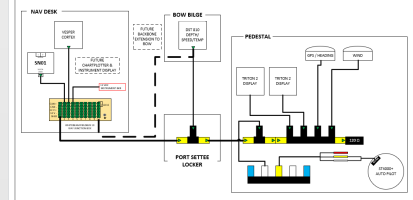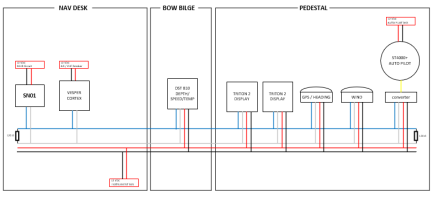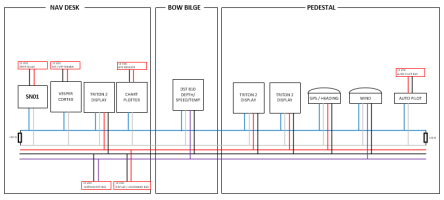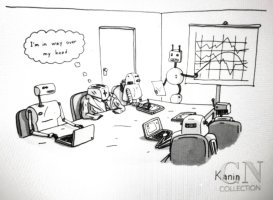NMEA has done a lot of work to make complicated networking simple by starting with existing standards (CAN Bus and DeviceNet) and adding marine specific standards to ensure the network is protected from the marine environment. Unfortunately the connection to the existing standards gets lost in all the marketing and you have to dig to find information. Anchor, Garmin, Maretron, and others make it sound like their connectors are magic, but at the end of the day NMEA 2000 is just two buses; a data bus and a power bus with the shield. The data bus needs to have two 120 ohm resistors at either end to ensure the data isn't reflected back into the network. The power bus can be split at any point and sourced from a number of places. The two busses are completely independent of each other aside from them being physically combined in the NMEA 2000 cabling.
I don't think splitting the power bus is a hack. It's discussed in detail on Maretron and Acitesense's web sites. Acitesense has a really good overview here:
https://actisense.com/news/powering-your-nmea-2000-network/. In large networks splitting the bus is necessary to ensure proper voltage at the ends of the network.
For the data bus, combining networks is a little more complicated both on a physical level and on the data level. I ran into a physical issue when I first connected the Raymarine Seatalk1 to Seatalk NG converter to my NMEA 2000 network. I was getting a crazy high water temp and my wind instruments were not reading correctly. I found a lot of information on the importance of the two 120 ohm resistors, so I started testing my network and found the resistance between the CAN + and CAN- was 30 ohms. This indicated I had 2 extra 120 ohm resistors in the network. I thought the Seatalk 1 to Seatlk NG converter converted NMEA 2000 data as well, but it actually is just an extension of the NMEA 2000 Network and the conversion only happens to the Seatalk 1 port. The weird thing is I found out it was my DST 810 sensor that had gone bad and my wind instrument, just needs to be cleaned, and all other data was transporting the network without issues even though the impedance on the data bus was not up to spec. I fixed my impedance issue by removing the two terminating resistors on the Raymarine converter. The water temp on the DST 810 is just broken and i'm going to have to accept it won't work properly until it's replaced.
@peaman, you may want to check your network to make sure you aren't making the same mistake. Like mine, you may not see any affect now, but it could start loosing data if/when you start adding additional equipment to the network.
The Bus extender Marlin posted is a proper way to bridge two NMEA 2000 networks form a data standpoint. It is an active device that takes data from one network and puts it on another. Each network is still independent of each other both from a data and power standpoint and each would have their own pair of 120 ohm terminating resistors. The device would be handy if you have a huge network that exceeds the limitations of the NMEA 2000 standard, but it isn't necessary if you are only interested in splitting the power of a NMEA 2000 system.
One of the advantages of the NMEA 2000 standard is you don't have to get into this level of detail if you're comfortable with how your network is working. Just provide a power supply, preferably somewhere in the middle, and connect everything up. Getting down to the detail is only necessary when you want the network to function outside of the standard. In my case, I would like to be able to control the power to different devices on the network differently.
Marlin, you said something about a rabbit hole earlier.... I really like understanding more about how these networks work and getting to know my network better. Your comment about the GPS sender made me think, but at the end of the day, the Vesper Cortex needs to be on to provide the remote connection and it has it's own dedicated GPS antenna. Hopefully I will never have to use it to track down where the boat is when I'm not on it.




